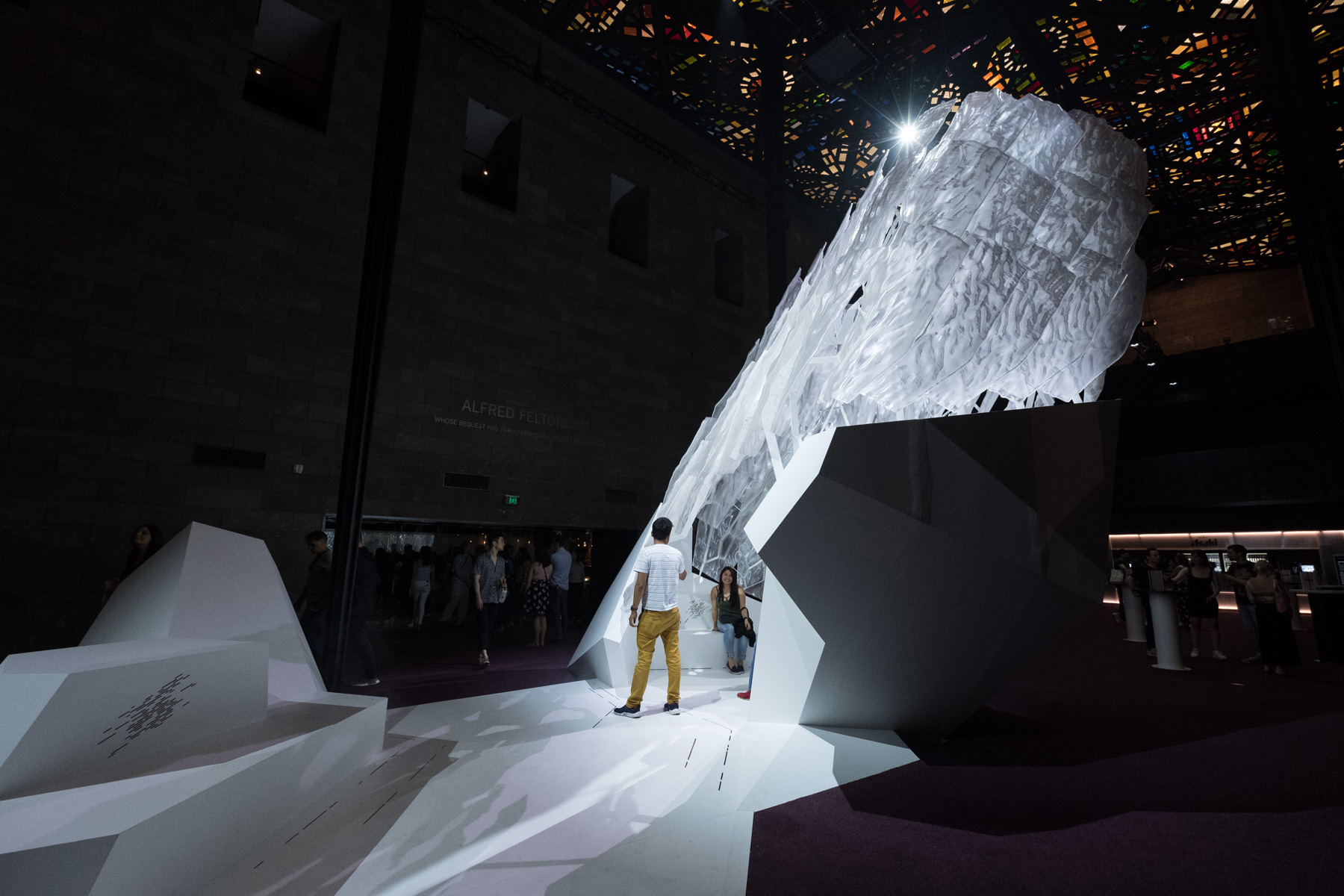Floe

Transporting audiences visually and aurally to Antarctica, Floe 2018, draws on the atmospheric effects of the Antarctic landscape to create a speculative architectural installation designed in response to a sound work by Philip Samartzis. The architecture is a part of a larger body of work developed by Roland Snooks, director of the RMIT Architectural Robotics Lab, that explores the architectural implications of algorithmic design through robotic 3D fabrication. The translucent skin of the tower comprises seventy unique overlapping semi-clear polymer panels printed by robot.
The sound work was recorded by Samartzis in Antarctica. By recording and representing the many sounds of Antarctica’s constantly shifting ice shelves, glaciers, icebergs and sea ice, Samartzis challenges the perception of Antarctica as an unchanging landscape, suspended in time and place.
- Design Partner: Installation supported by RMIT University.
- Sound work supported by the Australian Antarctic Division, the Australia Council for the Arts, the Bogong Centre for Sound Culture, Creative Victoria and RMIT University School of Art.
NGV Video Link to the making of FLOE
- FLOE
Sounds: